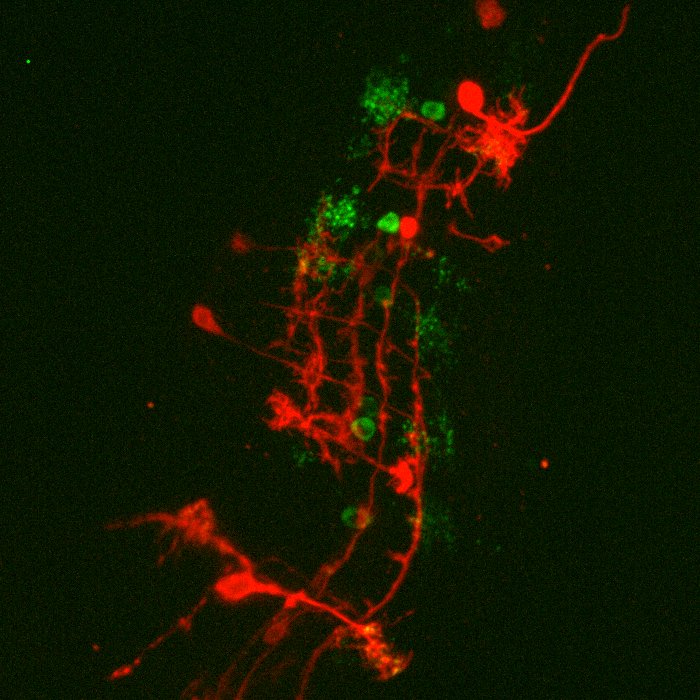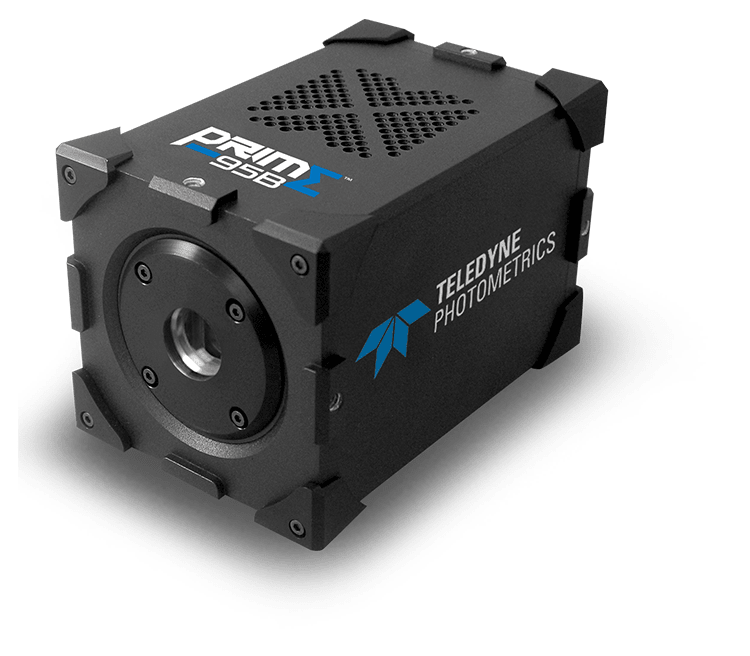Live Cell Spinning Disk Confocal
Dr. Jan Felix Evers
Centre for Organismal Studies at University of Heidelberg, Germany
Background
The Center for Organismal Studies (COS) Heidelberg has set the goal of researching organismal biology beyond the boundaries of the biological organizational stages. Research and teaching at the COS are devoted to the biology of organisms from the molecular basis to cell biology, developmental biology and physiology to evolution and biodiversity as well as system biology and biotechnology in plant and animal systems. Dr. Jan Felix Evers and his team's primary interest is in how neuronal circuits form in the central nervous system, both on the cellular and molecular level. Their focus lies on investigating these issues with spinning disk live cell imaging, which requires very high sensitivity and resolution.

Image captured with the Prime 95B Scientific CMOS camera from Photometrics.
Challenge
Synaptogenesis is very sensitive to overexpression artifacts. To study synaptogenesis with minimal interference, the research team devised a system to visualize endogenous gene expression in single neurons. Their challenge lies in working with a low copy number of fluorophores down to the single molecule level and therefore low fluorescent yield.
Photometrics cameras are reliable with great performance. We can now visualize things what we could not see before [with the Prime 95B Scientific CMOS camera].
Dr. Jan Felix Evers
Solution
The team wanted the best solution to cover all of their applications. The Prime 95B Scientific CMOS offers the largest usable field of view with the highest sensitivity of all available Scientific CMOS cameras, and an optimal sampling density with a 60x magnification. In addition, the Evolve 512 EMCCD provides the best sensitivity and signal-to-noise for detecting low endogenous gene expression at the single molecule level. "After carefully testing a larger range of cameras, we selected equipment from Photometrics. The Evolve provides the lowest noise floor and highest sensitivity for our most demanding samples while the Prime 95B provides a higher sampling density with signal-to-noise that is almost as good as an EMCCD" shares Dr. Evers. "Photometrics cameras are reliable with great performance," Dr. Evers concludes. "We can now visualize things that we could not see before."

Learn More About The Prime 95B